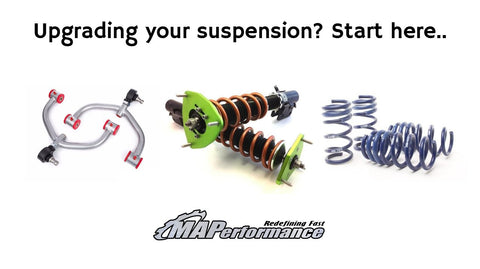Stainless Steel Battle: Two Alloys Enter, Only One Remains
Many companies advertise their stainless steel exhaust products as just that - simply stainless steel. Most don't bother specifying the differences between 409 stainless steel & 304 stainless steel material in their items, and you may be getting duped without knowing the difference. There are a few major differences between the metals like carbon content, iron content, & corrosion resistance.

For example, take a look at the two mandrel bent exhaust pipes above. Side-by-side the two look very similar but don't let that fool you. The corrosion resistance of the pipe depends on the content of chromium and nickel found in the alloy. 409 stainless is a metal designed primarily for the automotive exhaust industry, although it has been used successfully in other industrial applications. It combines good elevated temperature corrosion resistance and medium strength, good formability, and inexpensive overall cost. 409 carbon content is .03%. On the other hand, 304 is an austenitic stainless steel, & one of the oldest variants of stainless steel. Typically used in household applications, it is one of the most common metal alloys available today. Its carbon content is .08%.
The Difference is in the Numbers
The most frequently used stainless steel in performance exhaust systems is T409. Usually found in Flowmaster, Invidia, and many other aftermarket stainless mufflers and catbacks, this mixture does not contain enough chromium to resist corrosion in cold-weather states, or areas where salted roads aid in corrosion development. T409 has a chromium content of 10.50% to 11.75% while its nickel content is only 0.50%.
304 Stainless is the highest quality stainless steel used in the automotive world, and it is most often found in exhaust tips, clamps, bolts, and other small exhaust components where strength is very important. 304 grade stainless is tough and nearly impervious to rusting because it has around 20% chromium and 10% nickel content in the alloy. The high nickel content makes 304 an austenitic stainless steel. Because of its low ferrous content, 304 can develop a golden color when exposed to high heat over time. In fact, the ferrous metal content is so low that magnets won’t stick to it, making the identification of T409 and T304 very easy.
What is the best option?
When considering an aftermarket exhaust system for your performance car, be it an Evo 8/9/X, Subaru WRX/STI, Scion FRS/Subaru BRZ, your global location is an important factor. 409 Stainless exhaust systems will suffice for areas where road salt isn't an issue. Its temperature-resistant alloy allows for superior strength, and rust generally isn't an immediate concern when compared to your northern brothers and sisters. 304 Stainless Steel is great for rust prevention in northern/wintry areas, but susceptible to heat discoloring under extreme temperatures seen in most southern states.

Above you can see the differences in corrosion after just one winter. The main 304ss piping is slightly discolored but resisting rust quite well, where the 409 stainless steel resonator section is showing signs of surface rust. It's still strong and likely to last a long time, but the rust is sometimes off-putting to serious performance enthusiasts.
Why even use 409ss if it's not as durable?
Automotive manufacturers have found that by saving a few extra bucks in production by using the cheaper 409 stainless steel grade, they can keep prices low. Manufacturers also consider their target market, and whether the benefits of using a more expensive material will make a difference in purchase decisions.
Do you know what grade stainless steel your exhaust is made of? At MAPerformance, we use only 304 stainless on all of our custom exhaust components, downpipes, clamps, flanges, and other exhaust accessories. When buying MAPerformance products, you can rest assured that your performance parts will last for years to come without any rusting or corrosive threats!



Comments (10)
I need tube 0.4 mm ID by 0.6 mm OD 350 mm long
made of st. st. 409
Why don’t they make exhausts out of 316 it would stop rust altogether 316 is used on boats and clamps post bollards
I also found that as a Mandrel bending company, that when the 304 is heated, it trys to straighten out the bends. A company who buys overseas products made of 304 states that the exhaust kits they make fit great, but one the engine and exhaust are warm, the 304 will lengthen by 1.5-3" by straightening out the bends. Then the kit doesn’t fit any more and the tubes are hitting various parts of the body/frame. I use 409 in exhaust because it bends easier and will not straighten out when hot. To me, 304 is for pretty cars. Why do you need a polished exhaust on a lowered honda? It’s not like anyone is going to crawl under the vehicle to check it out??
Sooo youre saying my ebay catback on my $300 s13 isnt going to last forever??? :0 “what a twist!”
My $165 SHIPPED eBay exhaust has made it 2.5 years with salty snowy winters. No rust yet!
I got lucky haha.
Good to know, thanks for sharing! :)
turns out my Maperformance t3 turbo manifold is 304. It looks amazing though. And ceramic coated. Im sure 304 is still excellent seeing as it came with a lifetime warranty :)
Jordan you want 304 for that application, that’s all I use for my exhaust builds as we’ll
So even invidia uses the cheaper t409
So has mine. The packing blew all out of the muffler though, had to replace it with a better one.